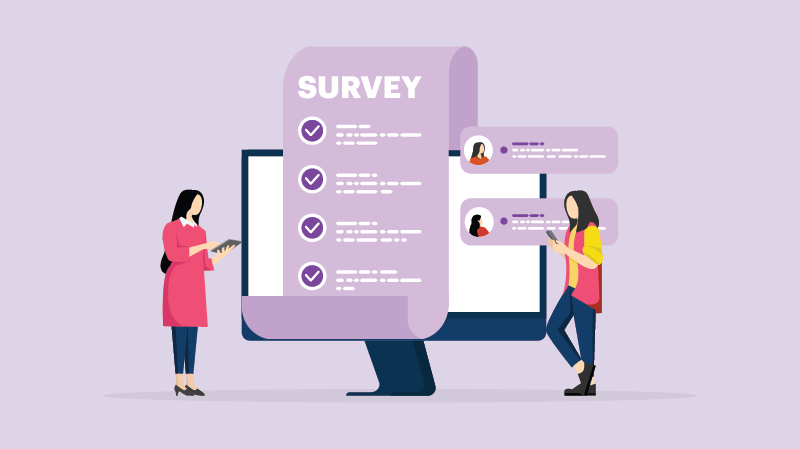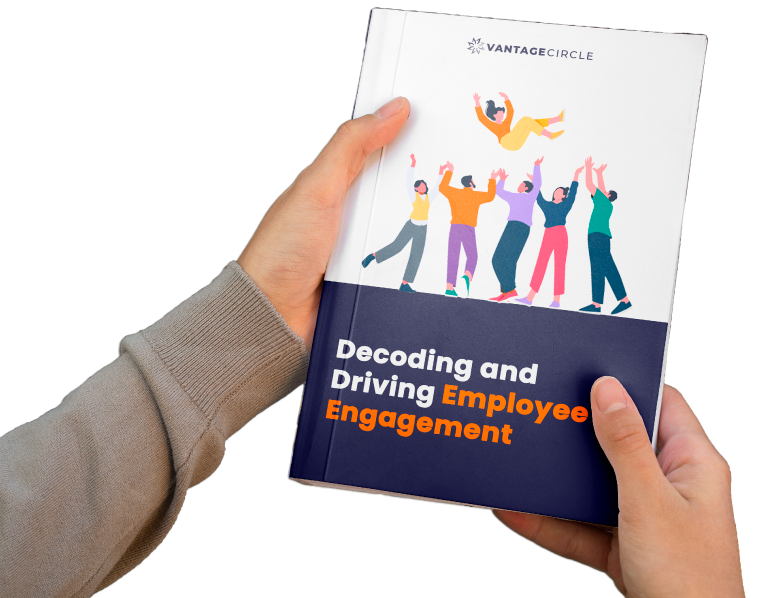Top 26 Survey Incentive Ideas for Survey Participation
Have you ever witnessed a phase at your workplace where your survey completion level is at a standstill and has not risen? And you are not sure about the reason?
Well, you are not the only one struggling through this; several organizations undergo this phase. In fact, most employees do not have the time or interest to complete a survey unless they are offered something in return.
This is where the importance of survey incentives comes into play. This blog will take you through what survey incentives are and give you a wide list of ideas to help you sail through the process.
Key Takeaways
- What are Survey Incentives
- What are the various monetary incentive ideas
- What are the various non-monetary incentive ideas
- What are other incentive ideas
- What are the Advantages and Disadvantages of Incentives for Survey Participation
What are Survey Incentives?
These are incentives that are offered to employees to encourage and increase their participation levels and response rates. They are designed and driven to motivate employees to take the time to complete the survey.
This will ensure accurate and valuable data for those conducting the survey. Incentives also have the potential to enhance participant satisfaction levels, which can increase the chances for future survey participation as well.
An incentive is a bullet, a key: an often tiny object with astonishing power to change a situation.
– Steven Levitt
Now, the choice of incentives depends upon the target audience, the survey objectives, and the budget assigned and available for the incentive program. There are a range of incentives that can be offered to the employees. Let us explore the incentive ideas that you can take inspiration from.
Cited by PeoplePulse, John Towler, a Psychologist and Senior Partner of Creative Organizational Design, commented:
“Incentives can increase survey response rates dramatically. Our experience has shown that offering a worthwhile incentive can entice up to 50% of the people who would not normally complete the survey, to finish it and send it in. This applies to both paper and pencil surveys and ones that are presented on the Internet.”
Monetary Incentives Ideas
Monetary incentives are those powerful motivators that provide employees with tangible rewards for their efforts. There are a range of effective incentive ideas that can fetch you your desired outcome.
Based on research by BMC Medical Research Methodology, a $10 monetary incentive offer effectively increased Wave 4 response rates. In addition, the $10 incentive offer was more effective in encouraging initially reluctant participants to respond to the survey.
1. Cash Rewards
You can directly offer cash rewards to your employees for participating in surveys. It cannot be denied that cash is the universally accepted incentive, giving employees the flexibility to use it when deemed fit. Hence, its importance can generate the required motivation to undertake surveys.
2. Reward Points
Implementing a reward point system will also help you boost survey participation. In this type of incentive, employees receive points for participating in surveys. Reward points are typically used as currency in rewards and recognition programs. The points can be redeemed for rewards like gift cards or customized experiences. The accumulation of points serves as a motivator for employees to undertake surveys.
3. Gift Cards
Offer participants a range of gift cards from popular retailers and online platforms. Gift cards are interesting incentives that allow employees to choose items or experiences that are attuned to their preferences.
4. Discount Coupons and Vouchers
Offer discount coupons and vouchers for a range of products and services as survey incentives. This includes travel vouchers for airlines, hotels, or travel agencies to fulfill employees' travel opportunities. Additionally, provide shopping vouchers for specific stores, unlocking a personalized shopping spree that caters to their preferences.
5. Charitable Donations
You can offer employees the option to choose a charity for a donation made on their behalf. This incentive is especially appealing to those interested in supporting philanthropic causes.
6. Membership Subscriptions
In an era where content is ruling the digital platforms, providing subscriptions to services like Netflix, Spotify, etc, can be a popular choice for employee incentives. This will give them membership access to unlimited content that caters to their entertainment requirements. As a result, it enhances their lifestyle and the choices they make.
7. Performance Bonuses
Giving bonuses and linking them to performance metrics and goals is another fascinating incentive for employees. This acts as a motivator for them to achieve objectives tied to their organizational goals.
8. Stock Options
You can offer company stock as a long-term incentive. This will assist employees in gaining a share in the company’s success. As a result, they will align their interests with organizational growth.
9. Team Lunch
Sponsor team lunches and outings. It helps cultivate camaraderie and strengthen team bonds, contributing to a positive workplace culture.
10. Special Savings Account Contributions
Take the lead in contributing to a savings or retirement account. This incentive will promote financial planning and long-term security for your employees.
11. Gas Cards
Providing gas cards as incentives will be a helping hand for employees who commute longer distances. This eases the financial burden incurred due to transportation costs, especially for those who totally rely on commuting.
Non-Monetary Incentives
Monetary incentives are not the only ones that motivate survey participation. Non-monetary incentives also have their fair share of charms that can unlock motivation in employees to undertake surveys. Let us explore those effective ideas in the following section:
Research on non-cash rewards has figured that organizations should consider such incentives over fiscal ones, especially during downturns in the economy, to boost employee morale and productivity.
12. Flexible Work Hours
You can offer flexibility to your employees, allowing them to set their own working hours within certain limits. This sense of autonomy makes them prioritize their preferences, striking a work-life balance. Also, make remote working a feasible option to promote flexibility.
13. Employee Recognition
Be consistent in ensuring recognition or appreciation for the initiatives your employees take towards participating in surveys. This form of incentive not only encourages them to undertake surveys but also boosts their morale and ignites them to engage with the company’s interests.
14. Reserved Parking Spaces
Allocating preferred parking spaces to employees is another interesting non-monetary incentive. Given the challenges and limitations in parking areas, this incentive offers convenience for regular riders, making parking hassle-free.
15. Timely Breaks
Timely breaks are essential for every working individual. And allowing employees the flexibility to take breaks is a suitable incentive. Breaks help them enhance their focus level and productivity.
16. Tickets to Events
Sponsoring tickets to sports, music, or cultural events is a great incentive to encourage survey participation. This type of experience is enjoyable for employees because it gives them the opportunity to take a break from their routine.
17. Book Club Membership
A book club membership stands out as the best incentive for avid readers. This allows employees to develop a sense of community and ignite intellectual engagement among them.
18. Flexible Leave Policies
Make sure to develop flexible leave policies by reducing restrictions. This form of incentive acts as a driving force for employees to undertake survey participation. Additionally, it allows them to unleash their freedom and acknowledge the importance of rest and personal time.
19. Project Ownership
You can offer employees the opportunity to take ownership of a project or initiative. Employee would take it as a pride to take ownership of their work. This incentive works best to ignite a sense of responsibility and achievement in them.
20. Office Decor Budget
Every employee loves to decorate their workspace, giving a personal touch to it. You can aid them in personalizing their workspace by assigning a budget for office decor items like plants, artwork, and desk accessories. This incentive works best for motivating them to undertake surveys.
Other Survey Incentive Ideas
Apart from the monetary and non-monetary incentives, you can look further for additional ideas. The following section will discuss other incentive ideas:
21. Team Celebration Event
One of the best incentives to encourage survey participation is to make it result-oriented. You can announce organizing a team celebration event or an outing for departments that showcase higher survey participation rates.
22. Wellness Day Vouchers
You can provide vouchers for wellness activities such as fitness classes, yoga sessions, spa days, or health screenings. Employees who are more wellness-driven will be elated to receive such an incentive.
23. Pet-friendly Day
Hosting a "bring your pet to work" day can be a unique and refreshing incentive that brings joy to pet-owning employees. This can create an enjoyable and stress-relieving experience for pet owners.
24. Employee-led Workshop Day
Allow employees to lead a workshop or training session. Employees who take a keen interest in sharing their knowledge, helping their co-workers, and are confident enough to present themselves will find this tempting. This empowers employees to share their expertise and promotes collaboration and skill-sharing within the organization.
25. Sustainability Initiatives
You can undertake and support a sustainability project in your employees' name. There may be a bunch of employees who are concerned about promoting sustainability. Hence, this can be a suitable incentive for them. Also, this will help you align with eco-friendly values, contribute to environmental sustainability, and showcase corporate responsibility.
26. Giveaways
Giveaways are another interesting way of attracting your employees to survey participation. You can either give away monetary or non-monetary freebies by assuring them that every respondent is in store for something special.
Utilizing these incentives can significantly enhance participation rates, yet pairing them with an advanced survey platform is essential for a seamless survey process. Opting for a specialized survey tool like Vantage Pulse will ensure an efficient and time-saving survey experience for both the management team and employees. It fulfills all the criteria to streamline the survey process and generate meaningful results.
Advantages and Disadvantages of Incentives for Survey Participation
The table below charts the advantages and disadvantages of Survey incentives. This will give you a clear understanding of the concept as a whole.
| Advantages of Incentives | Disadvantages of Incentives |
|---|---|
| 1. Incentives ignite motivation that increases participation and response rates | 1. Incentives are additional expenses that impact the overall budget of the survey or research. |
| 2. Participants tend to invest more time that brings in thoughtful and accurate responses. | 2. There is a risk that participants may rush through the survey only to claim the incentive, which influences them in the first place. This will affect the quality of responses. |
| 3. Incentives attract a diverse range of participants and enhance the representativeness of the data. | 3. The motivation incentives provide can be short, and the effect may vanish over time. |
| 4. Participants may view incentives as a gesture of appreciation. This can foster a positive relationship between respondents and management. | 4. Participants can become over-reliant on incentives. This will make them expect rewards for future surveys as well. |
| 5. Incentives contribute to higher completion rates. As a result, there will be a reduction in incomplete or abandoned surveys. | 5. Offering incentives may raise ethical concerns if there is involvement of force or undue influence. |
Conclusion
Thus, implementing thoughtful survey incentive ideas can significantly enhance the effectiveness of your data collection efforts.
The blog must have fed you well with a variety of ideas for survey incentives. It has also laid down the advantages and disadvantages for your better understanding.
Now, you can put these effective ideas into practice and generate the kind of enthusiasm you want among your employees for survey participation.
FAQs
Are there budget-friendly incentive options for small organizations?
Yes, budget-friendly options for small businesses can include casual dress days, recognition programs, extra break time, etc.
Can survey incentives be customized based on employee preferences?
Yes. Customizing incentives based on employee preferences will ensure they find the rewards meaningful. As a result, it will increase the overall effectiveness of the incentive program.


















